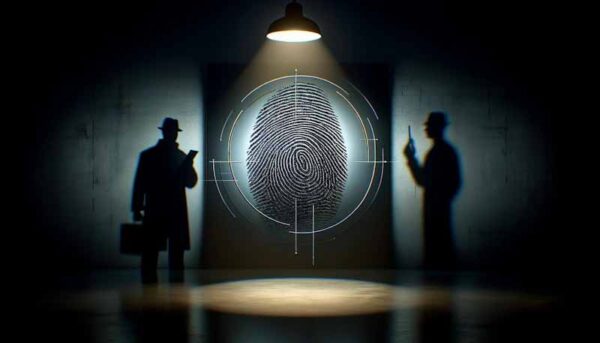Cyber forensics, a core component of cybersecurity strategies, involves analyzing cyberattacks to understand and mitigate threats. This field is essential for rapid incident response, evidence preservation for legal use, and future attack prevention.
By thoroughly examining digital evidence, cyber forensics helps identify the methods and sources of attacks, enhancing overall security measures. Furthermore, the insights gained from forensic investigations play a crucial role in developing more effective defense mechanisms and regulatory compliance, ensuring that organizations are better prepared against future vulnerabilities.
Techniques and Tools in Cyber Forensics
In cyber forensics, specialists utilize a variety of specialized techniques and tools to unearth digital evidence. Each method targets distinct elements of digital data, helping forensic analysts reconstruct the events of a cybersecurity incident. In the sections below, we explore some of the main forensic techniques and identify the most effective tools for each, including links for further reading.
Disk Imaging: involves creating an exact byte-by-byte copy of data from digital storage devices, ensuring the preservation of all evidence in its original form.
Tools:
X-Ways Forensics: Known for efficient and precise imaging.
EnCase: Provides robust imaging capabilities and is widely trusted in forensic communities. EnCase
Mobile Device Analysis: This technique focuses on extracting and analyzing data from mobile devices, crucial for accessing deleted or encrypted information.
Tools:
Cellebrite UFED: Specializes in overcoming mobile device security. Cellebrite
Oxygen Forensic Detective: Known for its broad data recovery capabilities from mobile and cloud sources.
Memory Forensics: Analyzes data from system RAM to recover information about the system’s state and running programs at any given time.
Tools:
Volatility: An open-source framework for volatile memory analysis.
Magnet RAM Capture: Simplifies the process of capturing physical memory.
Network Forensics: Entails monitoring and analyzing network traffic to identify and respond to security breaches.
Tools:
Wireshark: Essential for real-time network monitoring. Wireshark
NetworkMiner: Useful for reconstructing forensic data from network traffic.
Exploring More Tools…
Data Recovery: Focuses on retrieving lost, deleted, or damaged data, essential for unearthing attempts to hide or delete evidence.
Tools:
Recuva: Effective at restoring lost files on various storage media.
Forensic Toolkit (FTK): Offers capabilities to recover and analyze data comprehensively.
Suggested Links: For recovery techniques and software, explore the Piriform (Recuva) website or AccessData (FTK).
Email Analysis: Extracts and scrutinizes emails to authenticate and recover communication data, including deleted emails.
Tools:
Email Examiner: Supports various email formats for detailed analysis.
MailXaminer: Provides advanced email examination capabilities. MailXaminer
Log Analysis: Analyzes log files to detect unauthorized access and system operations, crucial for security audits.
Tools:
Splunk: Powerful for managing and visualizing large datasets of log data. Splunk
LogRhythm: Specializes in comprehensive log management and security analytics.
Cyber Forensics Investigation Process
The process of a cyber forensics investigation is meticulous and structured, unfolding through several critical steps to ensure thorough analysis and reliable results. Here’s a detailed look at each step:
1. Identification: Swift Detection of Security Incidents
The first step in a cyber forensics investigation involves quickly identifying potential security incidents as they arise. This requires constant monitoring of networks and systems using advanced detection tools. Analysts must recognize signs of unauthorized access or suspicious activity, which serves as the initial trigger for a deeper investigation.
2. Preservation: Secure Collection and Storage of Evidence
Once a potential incident is identified, it is crucial to preserve the integrity of the evidence. This involves securely collecting and storing digital artifacts in a way that prevents tampering or loss. Forensic experts use specialized software to create exact copies of data, known as digital imaging, ensuring that the original evidence remains unaltered for legal scrutiny.
3. Analysis: Detailed Examination of the Evidence
The third step is where the bulk of the investigation happens. Forensic analysts thoroughly examine the collected evidence using various analytical techniques and tools. They look for hidden files, review logs, analyze malware, and decrypt encrypted data if necessary. This detailed scrutiny helps in piecing together the sequence of events and understanding how the breach occurred.
4. Presentation: Reporting the Findings for Legal or Corporate Use
The final step involves compiling the findings into a detailed report. This report must clearly outline the facts of the case, supported by the evidence gathered and analyzed. It is used for legal proceedings or corporate decision-making, providing a basis for action such as strengthening security measures, pursuing legal action, or informing affected parties.
Challenges Facing Cyber Forensics
Cyber forensics professionals often tackle encryption, large data volumes, and anti-forensics techniques. They also face legal and ethical considerations, ensuring investigations are conducted with utmost integrity. Additionally, the rapid evolution of technology requires them to continually adapt their skills and update their tools to keep pace with new types of cyber threats. Moreover, the sheer complexity of digital environments today can complicate the process of identifying and isolating relevant data during an investigation.
Is a Career in Cyber Forensics Right for You?
Considering a career in cyber forensics? It’s a field that requires a unique set of skills and personal attributes. Here are some traits that are particularly valuable:
Analytical Skills: You should have a strong ability to think critically and analyze information deeply. Cyber forensics involves piecing together data from disparate sources to form a coherent picture of a cyber incident.
Attention to Detail: Given the complexity and subtlety of digital evidence, a keen eye for detail is essential. Missing a small piece of information can sometimes mean overlooking a key element of the case.
Problem-Solving Ability: You’ll need to be adept at thinking on your feet and solving complex problems, often under tight deadlines. Each case might present unique challenges requiring novel solutions.
Technical Proficiency: A solid understanding of computers, networks, and programming is crucial. You should be comfortable using a variety of software tools and technologies and continually learning new ones.
Ethical Integrity: Ethics play a central role in cyber forensics. You must navigate sensitive data and situations with discretion and a strong moral compass, ensuring that your investigations uphold the law and respect privacy.
Communication Skills: Being able to clearly communicate findings, both in writing and verbally, is crucial. You often need to explain complex technical issues to non-technical stakeholders such as legal teams or corporate executives.
Patience and Perseverance: Cyber forensics can be meticulous and time-consuming. Patience and persistence are vital as you may spend hours performing detailed analyses or following leads that may not always pan out.
If these traits sound like you, and you’re fascinated by the prospect of digging into digital data to uncover the truth behind cyber incidents, then a career in cyber forensics could be a highly rewarding path.
Conclusion:
Cyber forensics is integral to understanding and combating digital threats effectively. As technologies evolve, so do the methods in cyber forensics, ensuring robust defenses against increasingly sophisticated cyber threats. This field not only helps secure our digital infrastructures but also plays a crucial role in legal and regulatory frameworks, providing the evidence needed to prosecute cyber crimes and enforce data protection laws. For organizations and individuals alike, investing in cyber forensic capabilities is essential for maintaining trust and safety in our interconnected world.




